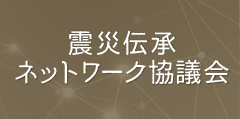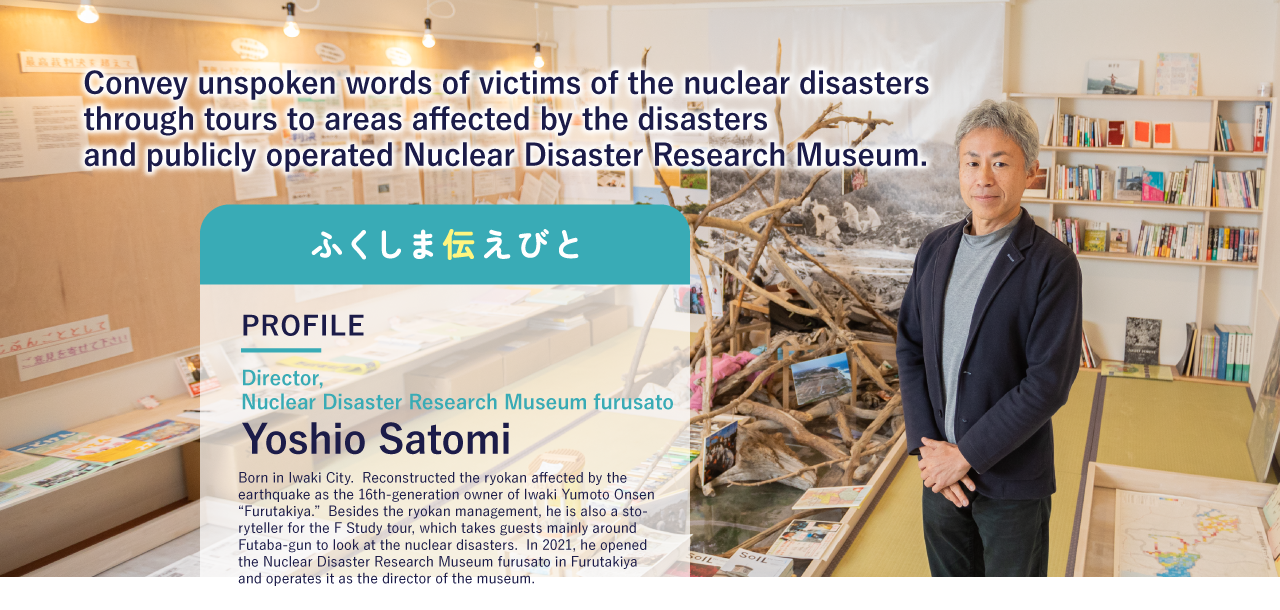
Supported the first response as the accommodation of volunteers, but started thinking of closing the ryokan due to no general guests.
Mr. Satomi is a storyteller, but is also the 16th-generation owner of the Japanese-style hot spring inn “Furutakiya,” which was founded in the Genroku era (1695). Such a long-established ryokan was hit hardly by the huge earthquake and the nuclear disaster. Upon occurring the earthquake, the building was damaged and the hot springs were shut down for one month. After managing to send the guests off the next day, he and his employees evacuated to Gunma Prefecture. Furutakiya had to stop its business. Mr. Satomi, however, returned home one week later because he was worried about his hometown. Having received requests from various quarters, he supported the initial response by offering the ryokan as a place for delivery of relief supplies, accepting volunteers to stay, and using his ryokan as a dormitory for Futaba High School students. Looking back on those days, Mr. Satomi says, “My sense of responsibility as a member of the community had been my driving force.'' With regard to accepting volunteers, in particular, he had been involved in developing the town before the earthquake, and therefore, he was approached from across the nation to use it as a place to stay. However, there were no regular guests due to the major damages. In the fall, he started to think about laying off all 140 employees and closing his business.
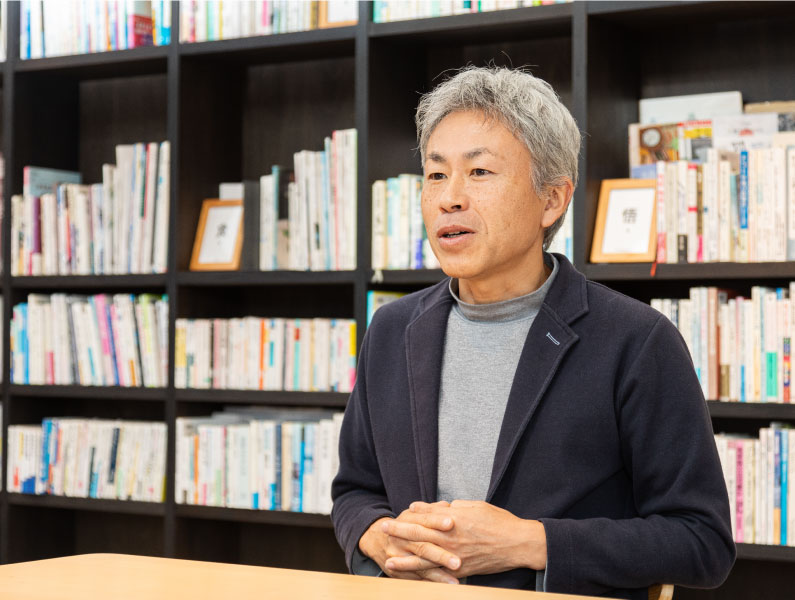
Mr. Satomi talking about his storyteller activities and tour details specialized in the nuclear disaster at the Furutakiya Book Cafe section, also a place to disseminate the earthquake-related information
Continuing to conduct tours to areas affected by the disasters specializing in the nuclear disaster, with a focus on guiding visitors around the areas.
The factor to determine whether to close or reconstruct his business was the history of the ryokan and the local community summarized by his deceased father. Mr. Satomi reaffirms and says, “There were depletion of hot springs caused by coal mine development and war damage in the past, but we have hot springs and futons now.'' He decided to resume his business with the aim to pass down the history including the earthquake. The F Study tour, the main activity for storyteller, started, right before renovation work began in December 2011. He has guided 500 to 600 people a year up until now, and has conveyed the scale of the damage and the current situations in the affected areas. This tour is specialized in the nuclear disasters, not the earthquake and tsunami. The reason why the focus was narrowed is that there are few storytellers who talk about the nuclear disaster, which was caused by humans. He has kept his focus on showing around the stricken areas, and also talked about the aim, “If they see the affected areas, they can experience the danger of nuclear disasters and the risk of energy consumption.” The major route includes in front of JR Yonomori Station in Tomioka Town, private houses covered with weeds, a monument, Tomioka Fishing Port, a hill overlooking the nuclear power plant, and more. He encourages participants to visit the museum themselves as it can be accessed without a guide.
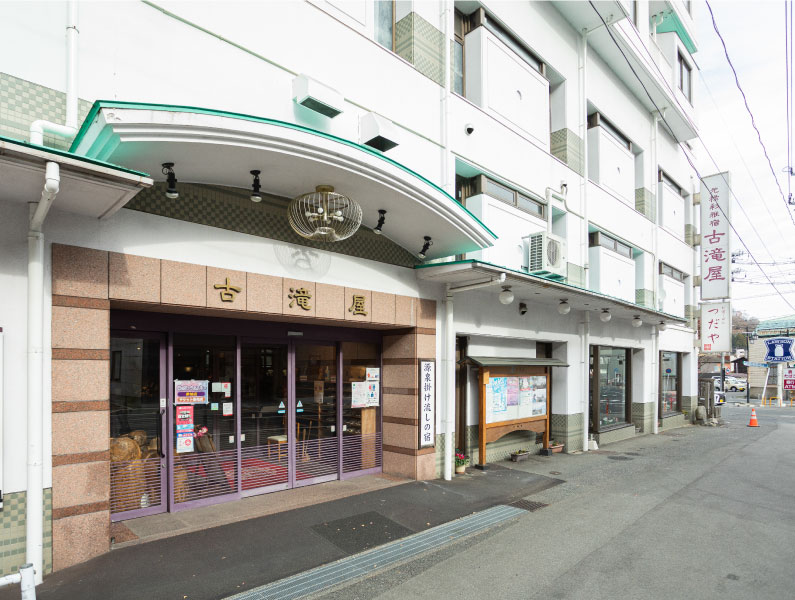
Nuclear Disaster Research Museum is located in Furutakiya, the starting point of F Study tour, where storing keepsakes of a daughter of Mr. Norio Kimura who presented them and is a storyteller in Okuma Town
Opened a privately run Nuclear Disaster Research Museum in Furutakiya to convey complex feelings of disaster victims.
In addition to activities as a storyteller on the tour, Mr. Satomi is also available for lectures at almost all events. As he has interacted with other storytellers, he started to think that he wanted to pass down their complex feelings. Many feelings were stirred up inside of those who were affected by the disasters, such as feelings that cannot be spoken out because they hesitated to do so amid a reconstruction mood and frustration at not being able to regain their pre-quake lives even after returning to their hometown. In 2021, he opened “Nuclear Disaster Research Museum furusato” in his ryokan with a view to conveying such feelings that cannot be provided in the media and displayed at museums. On the other hand, he was also distressed by being pointed out that the nuclear disasters cast a negative image on the tourism industry. However, he is now aware of the future building industry in addition to the tourism industry. This helped him become more proactive, and he was able to engage in a wide range of activities, including his ryokan management. The ryokan resumed its business in 2012. Currently, it seems that guests connected by accepting volunteers are increasing. He has been as a lecturer at a vocational skills development school these days, and has started to convey the nuclear disasters in a place for learning. He has undergone a process of repeated trials and errors while passing on the disasters to the younger generation who were still small at that time.
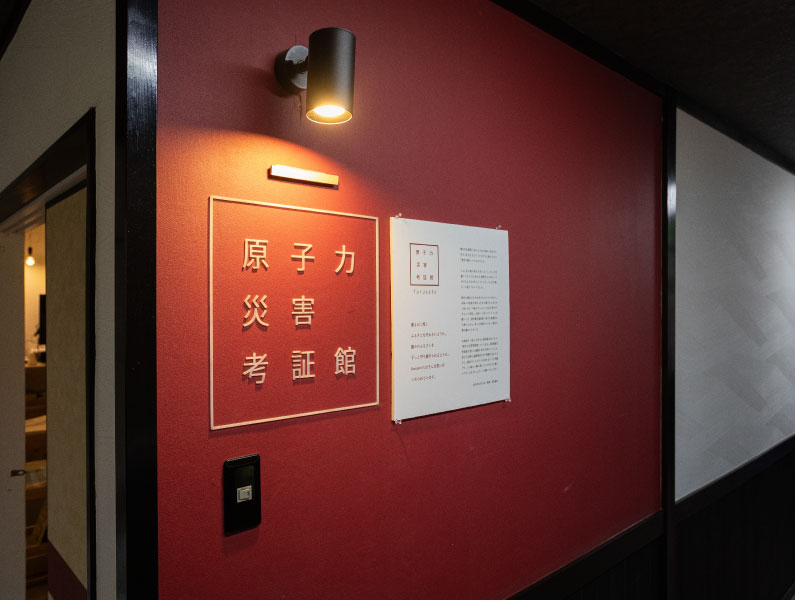
The museum was established with consideration given to Minamata Disease Museum as a hit, with a aim to promote a comprehensive understanding by encouraging visitors to observe both private and public facilities.
Nuclear Disaster Research Museum furusato (9th floor of Furutakiya)
〒972-8321
208 Sahako Jyoban Yamato-machi, Iwaki City, Fukushima Prefecture (Furutakiya)
TEL: 0246-43-2191 (Furutakiya)
HP:https://furusatondm.mystrikingly.com
MAIL:futasuke8@gmail.com


